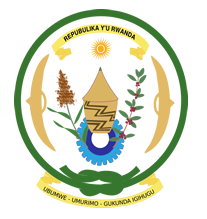Rwanda: Government
Key Figures
- Chief of State:
- President Paul Kagame
- Head of Government:
- Prime Minister Edouard Ngirente
Overview
- Government Name:
- Republic of Rwanda
- Constitution:
- Adopted: 2003; Provides for a two-house parliament, elected President, and multi-party politics. Also sought to prevent Hutu or Tutsi hegemony over political power.
- Government Type:
- Republic

Index of Economic Freedom
Country Risk Rating
Government Branches
| Main Powers | Election Process | Election Cycle 1 | |
|---|---|---|---|
| Executive | President is the main executive head, while prime minister is the head of the Council of Ministers. |
President is elected by plurality vote and prime minister is appointed by president. |
President: 7 years; Prime Minister: Not specified |
| Judicial | Highest and independent judicial power. |
Nominated by president and appointed by Senate. |
8 years |
| Legislative | Bicameral legislative body, with the senate being the upper house. |
Senate has 12 members indirectly elected by regional governing councils, 8 members appointed by the president, 4 members appointed by the Political Organizations Forum, and 2 members are selected by Institutions of higher learning. Chamber of Deputies has 53 members elected through a closed-list proportional representation system and 27 members indirectly elected by special interest groups. Supreme Court judges are nominated by the president of the republic and approved by the Senate. |
Senate: 8 years; Chamber of Deputies: 5 years |
Regional Trade Blocs
International Organization Participation [2]
Environmental Agreements [3]
Tax Information [2]
- Tax Authority:
- Rwanda Revenue Authority
- Tax Name:
- VAT
Sources:
- ElectionGuide http://www.electionguide.org/
- EY, http://www.ey.com
- CIA World Factbook, https://www.cia.gov/the-world-factbook/
- U.S. Bilateral Relations Fact Sheets http://www.state.gov/r/pa/ei/bgn/


